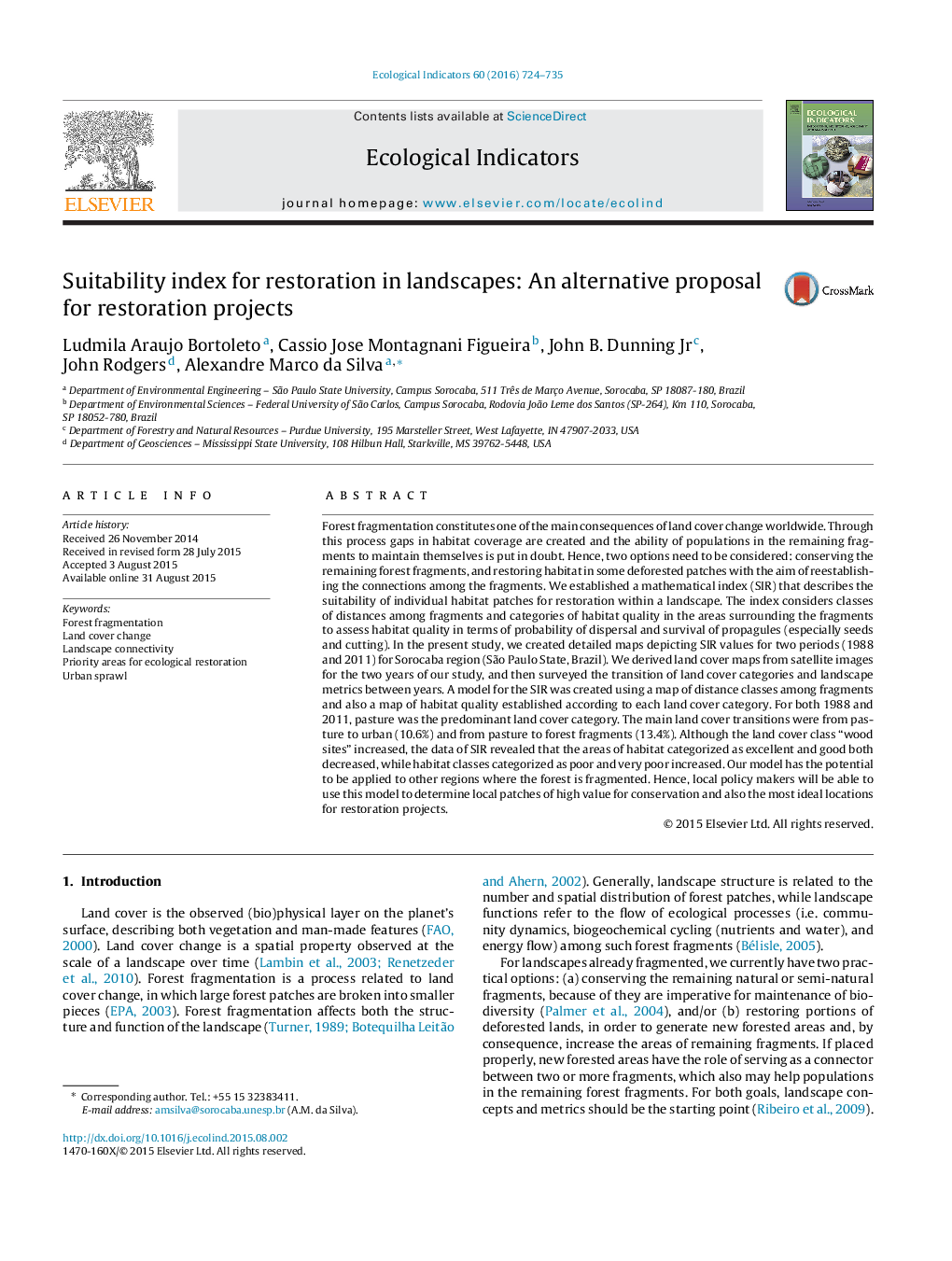| Article ID | Journal | Published Year | Pages | File Type |
|---|---|---|---|---|
| 6294143 | Ecological Indicators | 2016 | 12 Pages |
â¢Several ecological factors influence the potential of percolation (Pp) of a landscape.â¢Determining the Pp might optimize the ecological efficacy in restoration projects.â¢A new model for determining cartographically the Pp in deforested sites is presented.â¢The final maps present regions with different suitability indexes for restoration (SIR).â¢Regions with high SIR are shown for optimize the costs and efficiency of the projects.
Forest fragmentation constitutes one of the main consequences of land cover change worldwide. Through this process gaps in habitat coverage are created and the ability of populations in the remaining fragments to maintain themselves is put in doubt. Hence, two options need to be considered: conserving the remaining forest fragments, and restoring habitat in some deforested patches with the aim of reestablishing the connections among the fragments. We established a mathematical index (SIR) that describes the suitability of individual habitat patches for restoration within a landscape. The index considers classes of distances among fragments and categories of habitat quality in the areas surrounding the fragments to assess habitat quality in terms of probability of dispersal and survival of propagules (especially seeds and cutting). In the present study, we created detailed maps depicting SIR values for two periods (1988 and 2011) for Sorocaba region (São Paulo State, Brazil). We derived land cover maps from satellite images for the two years of our study, and then surveyed the transition of land cover categories and landscape metrics between years. A model for the SIR was created using a map of distance classes among fragments and also a map of habitat quality established according to each land cover category. For both 1988 and 2011, pasture was the predominant land cover category. The main land cover transitions were from pasture to urban (10.6%) and from pasture to forest fragments (13.4%). Although the land cover class “wood sites” increased, the data of SIR revealed that the areas of habitat categorized as excellent and good both decreased, while habitat classes categorized as poor and very poor increased. Our model has the potential to be applied to other regions where the forest is fragmented. Hence, local policy makers will be able to use this model to determine local patches of high value for conservation and also the most ideal locations for restoration projects.
